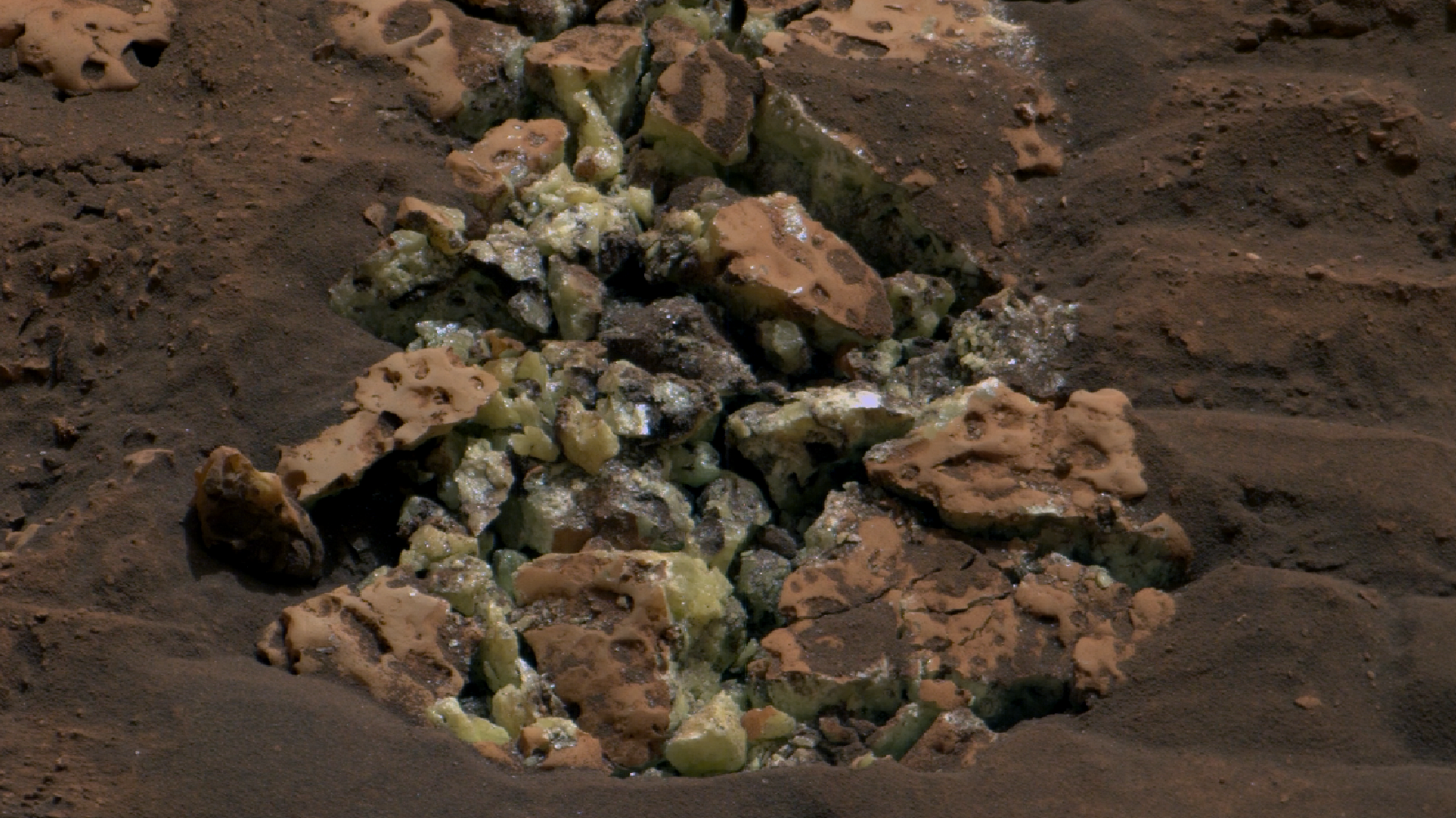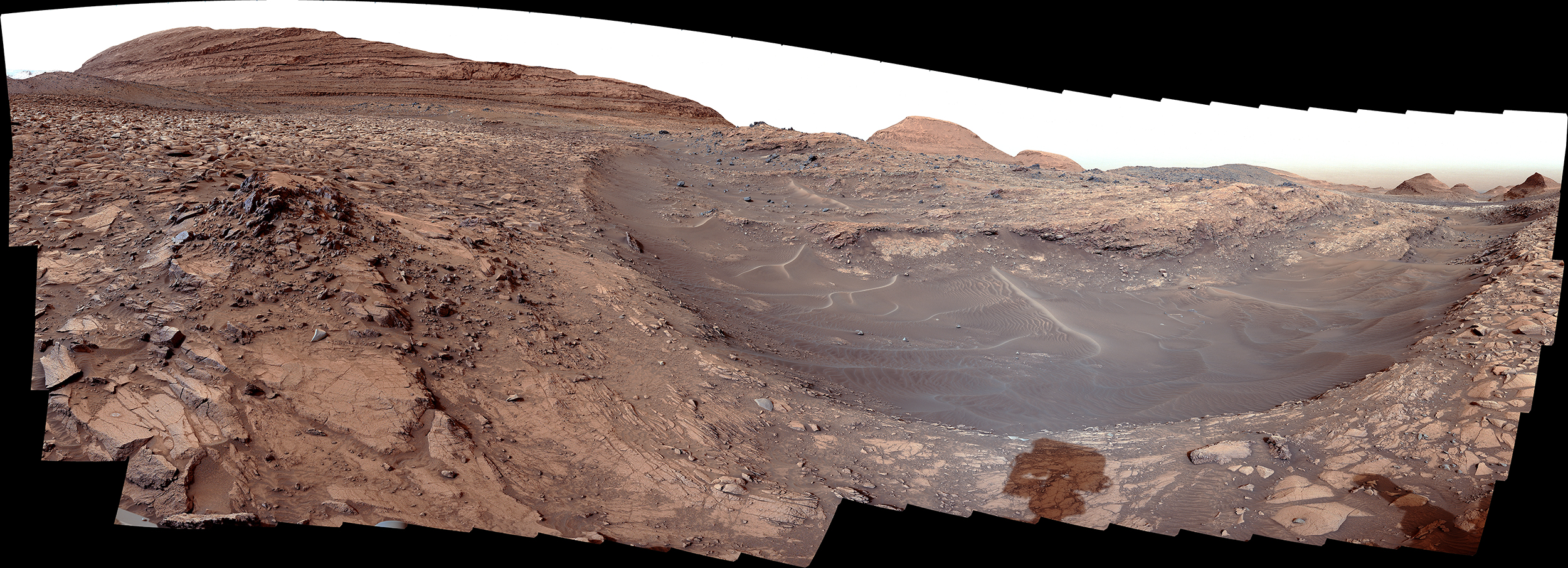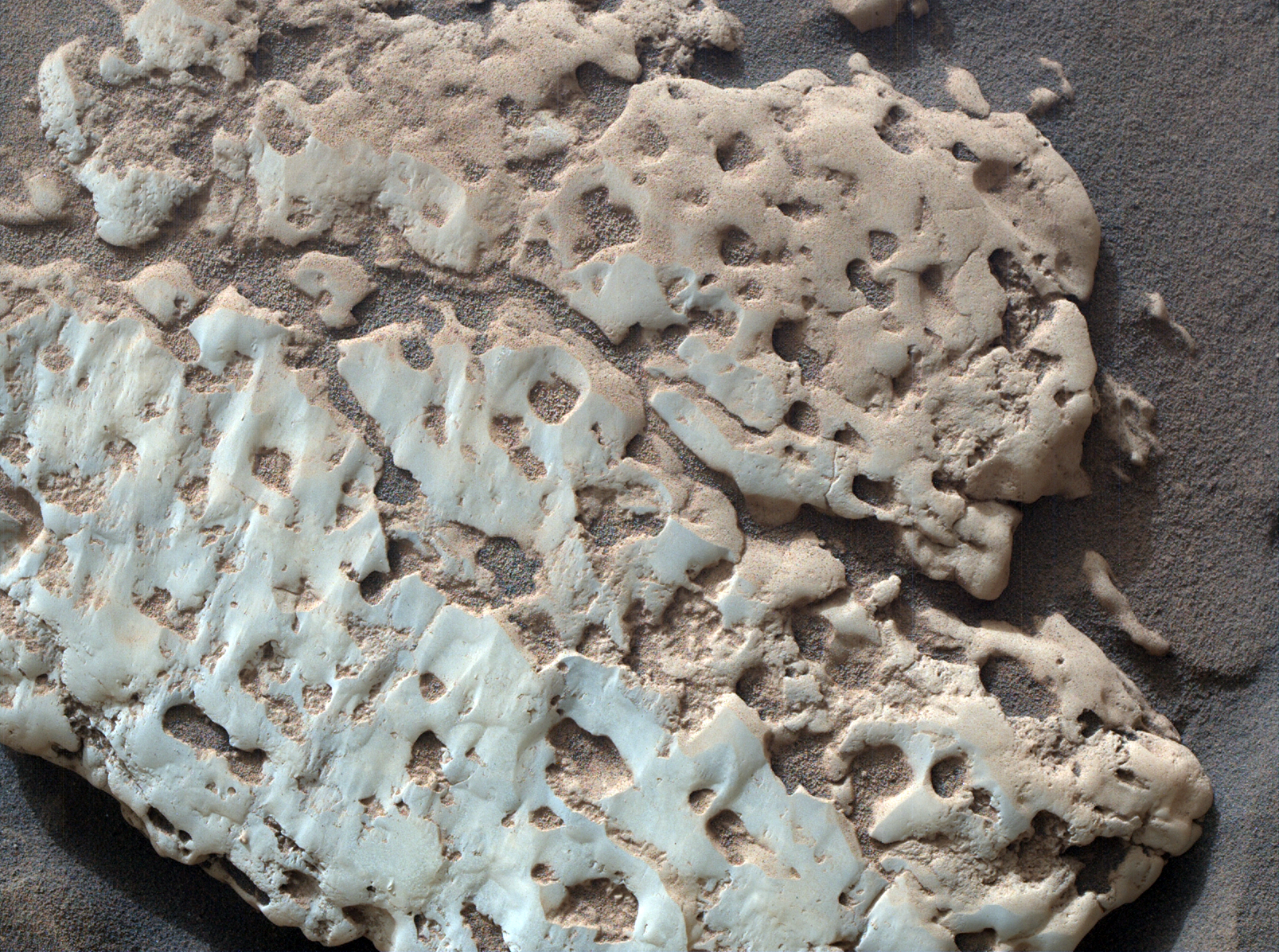
NASA's Curiosity rover has discovered an abundance of pure sulfur on Mars after it recently drove over a rock and cracked it open, stunning scientists.
The six-wheeled rover has spotted sulfur on Mars before, but only in a mixture with other minerals, including magnesium and calcium. Pure sulfur, an odorless element that forms in very specific conditions that planetary scientists hadn't linked to the rover's location, appears to be infused in many rocks across the region, according to a NASA statement.
"Finding a field of stones made of pure sulfur is like finding an oasis in the desert," Ashwin Vasavada, who is the mission's project scientist at the Jet Propulsion Laboratory in California, said in the statement. "It shouldn't be there, so now we have to explain it."
In the rover's photo of the rock (above), yellow sulfur crystals can be seen crowding within the inner regions of the object's crushed pockets. These crystals were too small and brittle for Curiosity to sample with a drill, so it ended up parking near another large rock nicknamed Mammoth Lakes, according to NASA. Here, the rover used a drill at the end of its robotic arm to scoop out a hole in that rock and stored it for further analysis before trawling away.
Related: Little Mars 'snowman' spotted by NASA's Perseverance rover (photo)
Curiosity, which is currently in the 12th year of its mission, stumbled upon its latest discovery on May 30 when it was exploring Gediz Vallis, a channel winding down the slopes of Mount Sharp in the center of the Gale Crater. The rover has been studying the channel for the past few months for signs of ancient microbial life.

From what we understand of Mars' past, Mount Sharp would have been a lot wetter billions of years ago than it is today. The Gediz Vallis channel snaking through the mountain would have been carved as the planet began drying out, possibly by strong winds or even violent flows of liquid water. Curiosity has identified some signs of this history, particularly in mounds of debris scattered within the channel. The rocks sport pale rings or halos near their edges, which scientists say are caused by water-led chemical reactions after the rocks absorbed available minerals deposited in the area.

Scientists aren't sure what role Mars' history would have in forming the pure sulfur just discovered, or if the element has any connection to other sulfur-based minerals previously discovered in the region.
"Discovering strange and unexpected things is what makes planetary exploration so exciting," Vasavada said.







